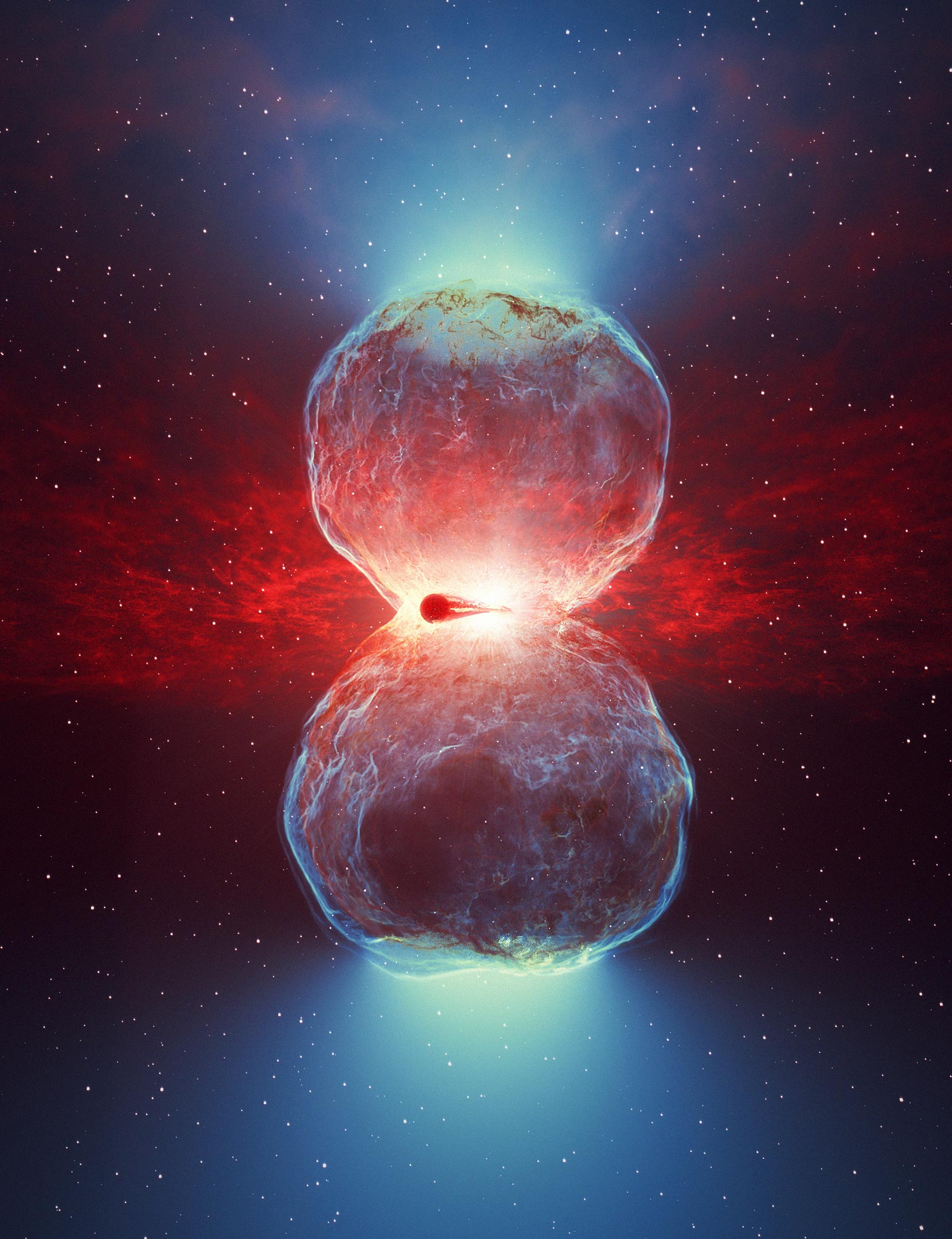Using purpose-built telescopes, researchers made unprecedented observations of a natural particle accelerator in outer space. Astronomers of the HESS (High Energy Stereoscopic System) gamma-ray observatory located in Namibia have for the first time registered the acceleration of particles in a stellar phenomenon called nova (or new star). The phenomenon involves powerful eruptions on the surface of a white dwarf.

During such an eruption on RS Ophiuchi star, researchers for the first time ever got the opportunity to follow the development of a new star in “real time”. This allowed scientists to observe and study the acceleration of space particles as if they watched a movie. Researchers were able to measure high-energy gamma radiation for a month after the explosion.
The nova creates a shock wave that passes through surrounding space, capturing particles and accelerating them to extreme energies. Surprisingly, the new star RS Ophiuchi apparently forced particles to accelerate to speeds close to light. This discovery was published in the Science journal.
Recurrent nova
White dwarfs are old stars that have “burned out” and collapsed, forming extremely compact objects. A recurrent nova occurs when a white dwarf forms a double system with a large star, and, due to its gravity, collects material from a more powerful companion. Then an explosion takes place in the outer layers of the red giant. It is caused by the thermonuclear reaction of a material that accretes to a white dwarf. RS Ophiuchi is one such recurrent novae. Every 15-20 years a powerful explosion occurs on its surface.

“The stars that form such a binary system are located at about the same distance from each other as the Earth and the Sun. The last such explosion in the RS Ophiuchi took place in August 2021”, — Alison Mitchell explains, a researcher at the Friedrich-Alexander University in Erlangen-Nuremberg, and principal investigator of the HESS Nova program.
Natural particle accelerator
The research team noted that the particles were accelerated to energies several hundred times higher than previously observed in novae. In addition, the energy, released by the explosion, was extremely efficiently converted into accelerated protons and heavy nuclei. Thus, the accelerated particles reached the maximum velocities, as predicted by theoretical models.

According to Ruslan Conno, one of the leading authors of the study and a doctoral student at DESY in Zeuthen, the observatory confirmation, that the theoretical limit of particle acceleration can indeed be reached in real cosmic shock waves, is of great importance for astrophysics. This suggests that the acceleration process may be just as effective, at least, in much more extreme relatives of novae —supernovae.
“This is the first time we have been able to make such observations. This will allow us to get an even more accurate idea of how space explosions take place. We can find, for example, that new stars are contributing to the ubiquitous sea of cosmic rays and therefore significantly affecting the dynamics of their immediate environment ”, — explains Dmitry Hangulyan, an astrophysicist at Rikkyo University in Tokyo, Japan.
We should remind as well that a giant explosion of the mysterious nature was registered in deep space earlier.

